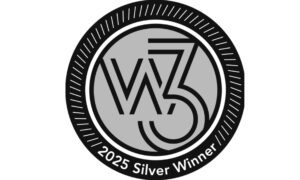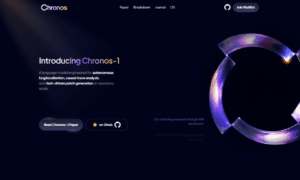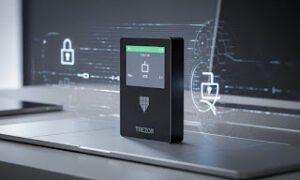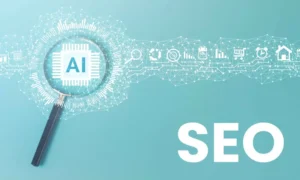Tech landing page isn’t just a simple entry point—it’s your elevator pitch, your first impression, and often, the deciding factor between a potential lead and a bounce. So, what makes a tech landing page truly great? It’s not just about design or catchy headlines; it’s about a holistic, seamless experience that engages, informs, and converts.
First Impressions Matter: Crafting a Clear and Compelling Headline
When a visitor lands on your tech page, you have only a few seconds to grab their attention. That’s where your headline plays a vital role. A great headline is clear, benefit-driven, and relevant to the visitor’s intent.
For example, instead of saying “Innovative AI Solutions,” opt for something more actionable like “Accelerate Business Efficiency with Our AI-Powered Tools.” This headline directly speaks to the benefit the user is looking for. Moreover, make sure the subheadline supports and expands upon the headline without repeating it. It should provide just enough detail to keep users scrolling.
Furthermore, using powerful and precise words not only aids in SEO but also improves clarity. Tech users appreciate content that is straightforward and purposeful.
Design and Layout: Prioritizing Simplicity and Visual Hierarchy
An exceptional tech landing page is visually engaging, but never overwhelming. Design should guide the visitor through the content, from the headline to the CTA (Call to Action). Clean layouts, white space, and consistent color schemes help maintain focus and reduce friction.
A well-structured layout typically includes:
- A sticky navigation bar (if needed)
- Scannable sections with relevant headings
- Strategically placed CTAs
- High-resolution visuals or animations that demonstrate product functionality
In addition, visual hierarchy helps lead the eye from the most important content down to supporting details. You can achieve this with different font sizes, contrasting colors, and directional imagery.
Value Proposition: Clearly Communicate the “Why”
Your value proposition is arguably the most critical part of your landing page. It needs to answer the question: “Why should I care?” Users want to know how your product or service solves their problem better than anyone else’s.
To illustrate, include a short paragraph or bullet list that communicates:
- What your product does
- Who it’s for
- What makes it different
Ensure that this section is placed above the fold so it’s one of the first things users see. Bold, benefit-driven language works well here. Furthermore, consider including mini case studies or success stats that reinforce your claims.
Trust Builders: Testimonials, Badges, and Real-World Proof
In the tech space, trust can be hard to earn. This is why trust indicators are non-negotiable. Including client testimonials, case studies, and industry certifications significantly increases the credibility of your offering.
Here’s how to implement them effectively:
- Place short testimonials with real names and job titles beneath your main copy
- Include recognizable client logos if available
- Add “as seen in” sections with publications or awards
- Highlight security badges or compliance standards (especially for SaaS)
- These elements reassure visitors and reduce the perceived risk of taking the next step.
Visual Media: Leverage Images, Videos, and Demos
Tech products can often be complex. Therefore, visual content such as explainer videos, demo GIFs, and screenshots are invaluable. They help users understand your product faster and more effectively than text alone.
Best practices include:
- Keeping demo videos under 2 minutes
- Using captions or annotations for clarity
- Optimizing media for fast load times
Moreover, interactive features such as product tours or live chat bots can further enhance user engagement. These tools provide immediate answers, which is essential for keeping tech-savvy users on your page.
Effective Call-to-Action: Guide the User to the Next Step
Your CTA should be clear, specific, and easy to find. Avoid generic phrases like “Submit” or “Click Here.” Instead, use language that reflects the value or outcome, such as “Get My Free Trial” or “Schedule a Demo Today.”
Here are some CTA optimization tips:
- Use contrasting colors to make your CTA stand out
- Position the CTA multiple times on the page
- Test different placements and copy variations
Additionally, consider including microcopy near the CTA to address any last-minute hesitations. For example, “No credit card required” can significantly boost click-through rates.
Mobile Optimization: Ensure a Seamless Experience Across Devices
With mobile usage dominating online traffic, a great tech landing page must be fully responsive. Every element—from text blocks to image sliders—should render beautifully on smartphones and tablets.
To achieve this:
- Use responsive frameworks like Bootstrap or Tailwind
- Minimize large media files for faster mobile loading
- Keep mobile CTAs large and tappable
Furthermore, test your landing page across multiple devices and browsers. A broken or unresponsive mobile page can destroy trust instantly, especially with tech audiences who expect polished experiences.
SEO Best Practices: Drive Organic Traffic and Improve Visibility
Your landing page should not only convert visitors—it should also attract them. This is where SEO plays a vital role. Use keyword research tools to identify terms your audience is searching for, and integrate those naturally into your:
- Headline and subheadings
- Meta title and description
- Image alt text
- URL slug
In addition, fast page loading, mobile responsiveness, and SSL encryption also contribute to SEO rankings. Don’t overlook the technical aspects, as Google weighs them heavily.
Transitioning from discovery to decision becomes far easier when users can organically find your tech landing page through search engines.
Loading Speed and Performance: Don’t Make Users Wait
Performance isn’t just a developer concern—it’s a user experience issue. Research shows that if your page takes more than 3 seconds to load, many visitors will bounce. That’s money lost.
Some ways to optimize performance include:
- Compressing images
- Using a content delivery network (CDN)
- Reducing external script calls
- Enabling lazy loading for media
Fast-loading pages not only improve user satisfaction but also enhance SEO rankings. Moreover, users perceive faster sites as more trustworthy, especially in the tech domain.
A/B Testing and Analytics: Continuously Improve Your Landing Page
Even the best landing page needs constant refinement. Use A/B testing tools like Google Optimize or VWO to test different elements—such as headlines, CTAs, or layouts.
Track key metrics like:
- Bounce rate
- Conversion rate
- Time on page
- Scroll depth
Make data-driven decisions to improve weak areas. Additionally, collect qualitative feedback through on-page surveys or heatmaps to understand user behavior more deeply.
Conclusion
To sum up, building a high-converting tech landing page involves a strategic blend of design, copywriting, SEO, trust-building, and continuous optimization. From the first headline to the final call-to-action, every element should serve a clear purpose: to inform, engage, and convert your visitors.
A great tech landing page isn’t just a static webpage—it’s a dynamic tool that grows with your brand, adapts to your audience, and reflects the core value of your product. So, whether you’re launching a SaaS platform, promoting a new AI tool, or marketing your latest API integration, make sure your landing page meets—and exceeds—the expectations of the tech-savvy user.



































